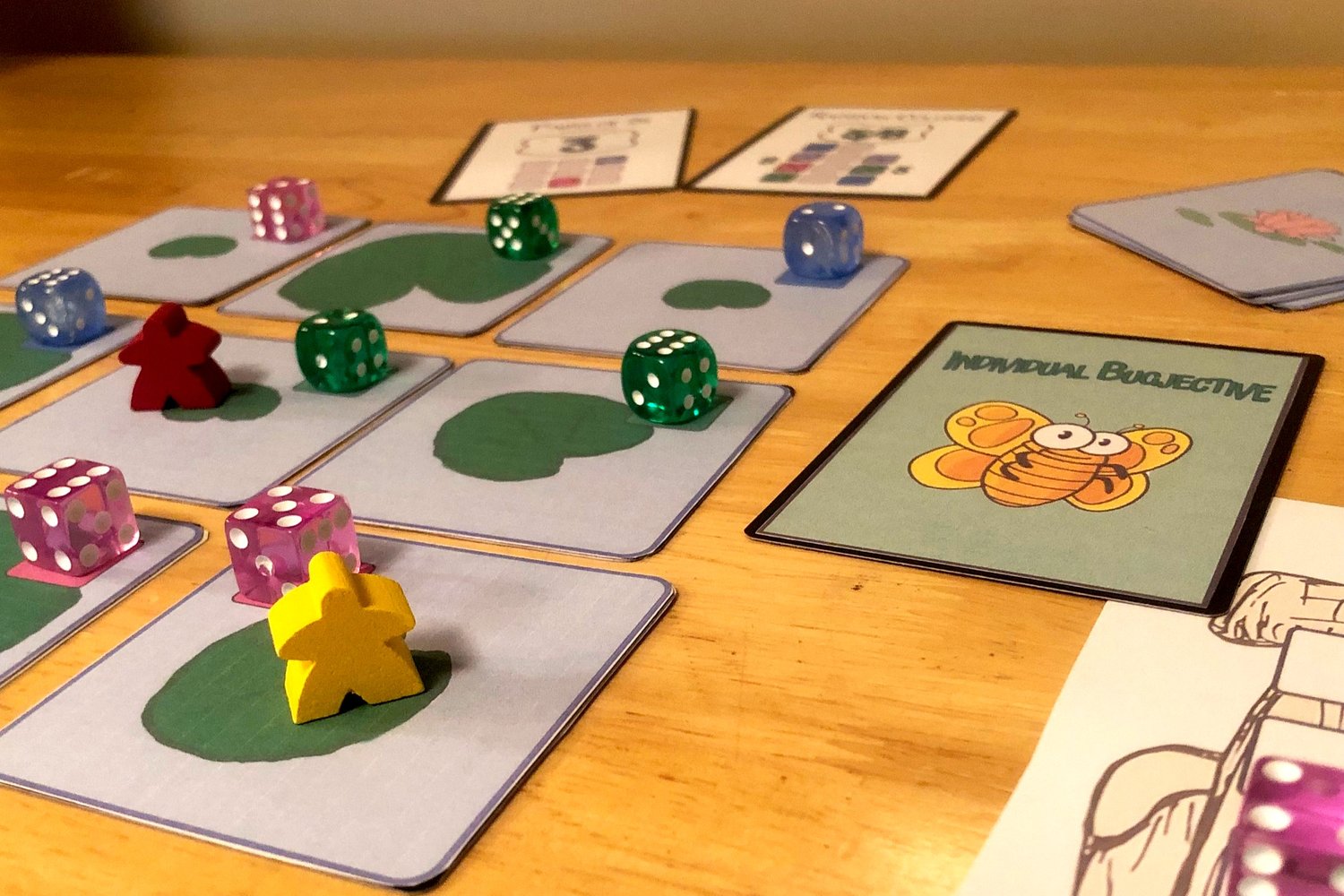
I think an approach that is more useful to most designers is to get pen to paper as soon as possible and start playing, and tweaking, and iterating.
Either way, eventually I get my components out in front of me and I get to ask myself the most important question: is it fun?
And, if you haven’t realized it by the fact that I am writing an entire series on publishing this game, Froggy Bazaar is fun, it is a lot of fun.
It also works, right out of the bat the gameplay was smooth. There is still a lot of work to do, but I’m already confident that we have something on our hands that people like (although we’ll eventually need blind playtesting to really solidify that assumption).
Quick Overview
Within the next few weeks I’ll have a Tabletop Simulator version of Froggy Bazaar up for general playtesting, but for now I think it’s worth giving a brief overview of what this game is mechanically.
Froggy Bazaar is a tableau building and movement game, where you play a frog hopping from lily pad to lily pad collecting bugs (dice) to add to your rucksack. End of game scoring is based on secret and public bugjectives based on the pattern of dice (numbers and color) in your rucksack.
On a player’s turn they have three optional actions
-
Hop to an adjacent lily pad – collect the die on the tile to add to the top row of your tableau. Then replace the die with a random die from the bag.
-
BIG hop – re-roll all dice on the top row of your tableau and re-distribute them (get one bonus froggy buck).
-
Go to market – trade dice the top row of your tableau with the communal market.
The game ends at the end of the round when a player fills their rucksack (12 slots). Whoever has the most points wins.
Early Playtesting
In early playtesting with my closest circle, I’ve answered two of the most important questions about Froggy Bazaar – 1. is it fun? and 2. does it work?
I am in the process of making a basic Tabletop Simulator version so that I can test the game with a broader group of people – like our Pine Island community, and a broader group of friends and colleagues.





